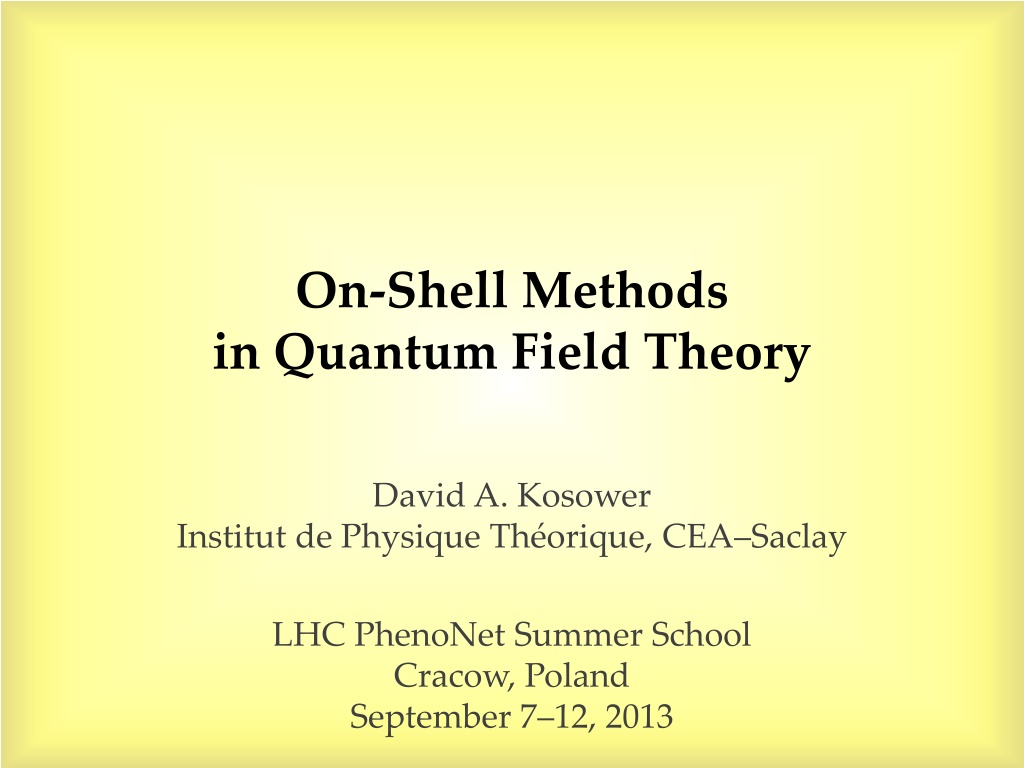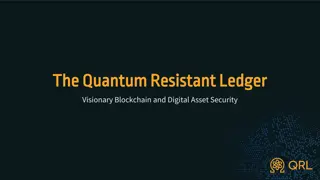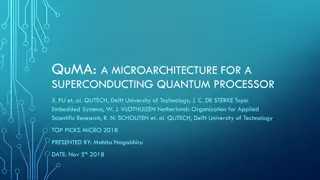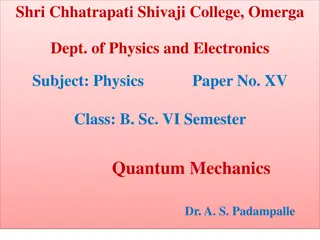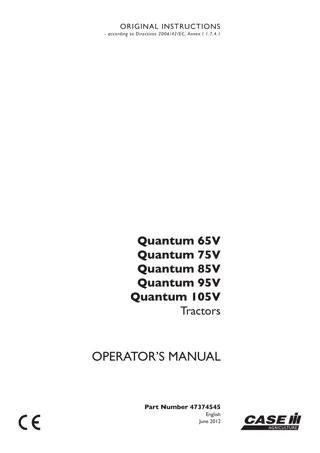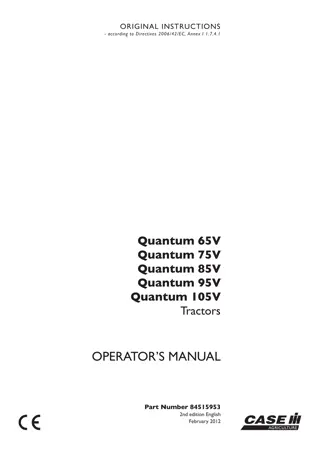On-Shell Methods in Quantum Field Theory
Delve into the intriguing realm of on-shell methods in quantum field theory through a comprehensive exploration of techniques like BCFW recursion relations, unitarity principles, Feynman integrals, and more. Uncover the intricacies of calculating tree amplitudes, handling diagram-by-diagram challenges, and applying formalism to understand fundamental kinematics and properties of amplitudes within the quantum field theory framework.
Download Presentation

Please find below an Image/Link to download the presentation.
The content on the website is provided AS IS for your information and personal use only. It may not be sold, licensed, or shared on other websites without obtaining consent from the author.If you encounter any issues during the download, it is possible that the publisher has removed the file from their server.
You are allowed to download the files provided on this website for personal or commercial use, subject to the condition that they are used lawfully. All files are the property of their respective owners.
The content on the website is provided AS IS for your information and personal use only. It may not be sold, licensed, or shared on other websites without obtaining consent from the author.
E N D
Presentation Transcript
On-Shell Methods in Quantum Field Theory David A. Kosower Institut de Physique Th orique, CEA Saclay LHC PhenoNet Summer School Cracow, Poland September 7 12, 2013
Review of Lecture II Used factorization to derive BCFW on-shell recursion relations Used unitarity to obtain a basic formula
First Steps Compute tree amplitudes: using Berends Giele recursion, BCFW, Grassmannians, etc. Form phase-space integral Promote it back to a loop integral This has the correct cut in the K2 channel, not necessarily in other channels Do algebra to simplify numerator, and perform integral reductions
Problems Diagram-by-Diagram Massive particles: massless particles have divergences Absorptive (imaginary) parts only An amplitude has many channels; here we handle only one
Next Steps Identify Feynman integrals, and replace four- dimensional forms by dimensionally-regulated integrals Retain only integrals which have a cut in the current channel K2 Sum over channels: when encountering the same integral more than once, retain only one copy Need additional techniques for terms with no cuts Version 1 of the unitarity method; used for many calculations in the 1990s
Problems Diagram-by-Diagram Massive particles: massless particles have divergences Absorptive (imaginary) parts only An amplitude has many channels; here we handle only one Reduction algebra left to do: can t implement this purely numerically not an obstruction to analytic calculations
On-Shell Methods Formalism Known integral basis: Rational function of spinors On-shell Recursion; D-dimensional unitarity via mass Unitarity in D = 4
On-Shell Methods Kinematics: spinor variables Properties of amplitudes become calculational tools Factorization on-shell recursion (Britto, Cachazo, Feng, Witten) Unitarity unitarity method (Bern, Dixon, Dunbar, DAK, ) Basic Unitarity Generalized Unitarity Underlying field theory integral basis
One-Loop Integrals What integrals can arise? In an n-gluon amplitude, we get integrals with up to n propagators; and up to n powers of the loop momentum (one at each three-vertex) [In an n-graviton amplitude, we get integrals with up to n propagators; and up to 2n powers of the loop momentum (two at each three-vertex)] Contracted into external vectors: momenta, polarization vectors, spinor strings
One-Loop Integrals Need to compute In principle, can just do the integral: Feynman-parametrize Perform loop integral Perform Feynman parameter integrals expression in terms of logarithms & dilogarithms But analysis is hard; algebra is easy
Want to eliminate analysis in favor of algebra: exploit algebraic relations between integrals Example: tensor reduction External vectors are taken to be four-dimensional n-point rank-j integral (n 1)-point rank-(j 1) integral n-point rank-(j 1) integral
Define Gram determinant In D = 4, any five vectors are linearly dependent equation relating I6 to a linear combination of I5s, etc. equation relating I5 to a linear combination of I4s + O O( )
Combining all possible equations, we get additional equations that allow us to express n 6-point integrals in terms of boxes and pentagons, to all orders in n 5-point integrals in terms of boxes, through order 0 Eliminate all tensor integrals in favor of scalar ones Use Lorentz invariance & parity to reduce four- and lower- point tensor integrals Get a limited basis At higher loops, add integration-by-parts (IBP) identities
Integral Basis At one loop, all n 5-point amplitudes in a massless theory can be written in terms of nine different types of scalar integrals: boxes (one-mass, easy two-mass, hard two-mass, three- mass, and four-mass); triangles (one-mass, two-mass, and three-mass); bubbles In an N=4 supersymmetric theory, only boxes are needed.
The Three Roles of Dimensional Regularization Ultraviolet regulator; Infrared regulator; Handle on rational terms. Dimensional regularization effectively removes the ultraviolet divergence, rendering integrals convergent, and so removing the need for a subtraction in the dispersion relation Pedestrian viewpoint: dimensionally, there is always a factor of ( s) , so at higher order in , even rational terms will have a factor of ln( s), which has a discontinuity
Generalized Unitarity Unitarity picks out contributions with two specified propagators Can we pick out contributions with more than two specified propagators? Yes cut more lines Isolates smaller set of integrals: only integrals with propagators corresponding to cuts will show up Triple cut no bubbles, one triangle, smaller set of boxes
Can we isolate a single integral? D = 4 loop momentum has four components Cut four specified propagators (quadruple cut) would isolate a single box
Quadruple Cuts Work in D=4 for the algebra Four degrees of freedom & four delta functions but are there any solutions?
A Subtlety The delta functions instruct us to solve 1 quadratic, 3 linear equations 2 solutions If k1 and k4 are massless, we can write down the solutions explicitly solves eqs 1,2,4; Impose 3rd to find or
Solutions are complex The delta functions would actually give zero! Need to reinterpret delta functions as contour integrals around a global pole [other contexts: Vergu; Roiban, Spradlin, Volovich; Mason & Skinner] Reinterpret cutting as contour modification
Global poles: simultaneous on-shell solutions of all propagators & perhaps additional equations Multivariate complex contour integration: in general, contours are tori For one-loop box, contours are T4 encircling global poles
Two Problems Too many contours (2) for one integral: how should we choose the contour we use? Changing the contour can break equations: is no longer true if we modify the real contour to circle only one of the poles Remarkably, these two problems cancel each other out
Require vanishing Feynman integrals to continue vanishing on cuts General contour ?1= ?2
B A Box Coefficient Go back to master equation D C Apply quadruple cuts to both sides Solve: Britto, Cachazo, Feng No algebraic reductions needed: suitable for pure numerics
Problems Diagram-by-Diagram Massive particles: massless particles have divergences Absorptive (imaginary) parts only An amplitude has many channels; here we handle only one Reduction algebra left to do: can t implement this purely numerically
Color Ordering at One Loop For adjoints An;c can be written as a sum of permutations of An;1
Approaches to One-Loop Amplitudes Generalized Unitarity General theories using on-shell methods Integrand Level: Ossola Papadopoulos Pittau method Costas Papadopoulos s lectures Integral Level:
Three-Point Amplitudes Two non-vanishing helicity configurations, and two vanishing ones,
Example 1: coefficient of I4(K12,3,4,5) in A5(1 ,2 ,3+,4+,5+) Look at the quadruple cut +++ vertex to be non-vanishing, need but in general, so one will vanish General feature: opposite-chirality three-point vertices alternate
Take : then impose then
Example 2: All-n MHV Coefficient of a specific easy two-mass box: only one solution will contribute
Using momentum conservation our expression becomes
Triangle Cuts Unitarity leaves one degree of freedom in triangle integrals. Coefficients are the residues at Forde (2007) 2 1 3
Some boxes will share the same three propagators But of course have an additional propagator other poles in the complex plane These terms scale as 1/t as t
Define an operator Inft extracting the pole-free parts wrt t Its ? = 0 term gives the residue at infinity The cut integrand has the form triangle boxes To extract it:
Example 3: All-n MHV Compute coefficient of two-mass triangle in QCD or N = 4 SUSY First compute Determine the spinors,
Now so Also so and so and
Back to Integrals and their singularities
The Easy Two-Mass Box Divergent when ? 0
Transcendentality Also called polylog weight N= 4 SUSY has maximal transcendentality = 2 loop order QCD has mixed transcendentality: from 0 to maximal
Cancellation of Infrared Singularities UV singularities disappear when you define the coupling at a physical scale instead of at : renormalization You cannot renormalize IR singularities: virtual contributions really are divergent Only possible source of cancellations: real-emission contributions
Real-Emission Singularities Matrix element Integrate
Infrared Cancellations Cannot distinguish collinear gluons from a lone gluon: both appear as a single jet Must introduce a physical resolution, and sum over all initial and final states within that resolution Kinoshita Lee Nauenberg theorem guarantees finiteness In collider physics, jet resolution ( cone size and minimum ?T
Infrared & Collinear Safety Physical quantities are finite Depend on resolution parameter Only holds for suitable ( infrared-safe ) observables in perturbation theory Need to require that O On+1 O On when two gluons or a quark anti-quark pair become collinear a gluon becomes soft
